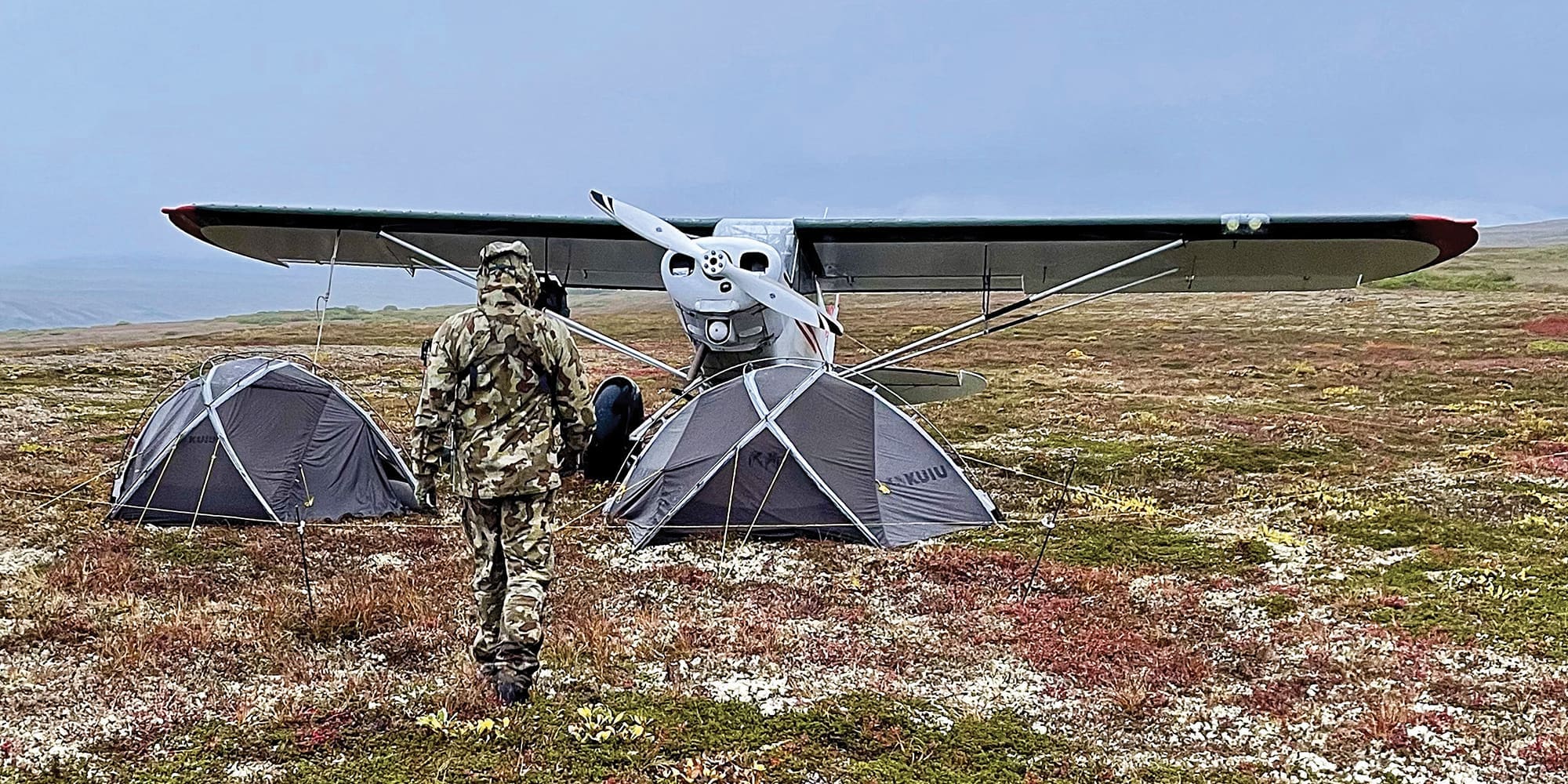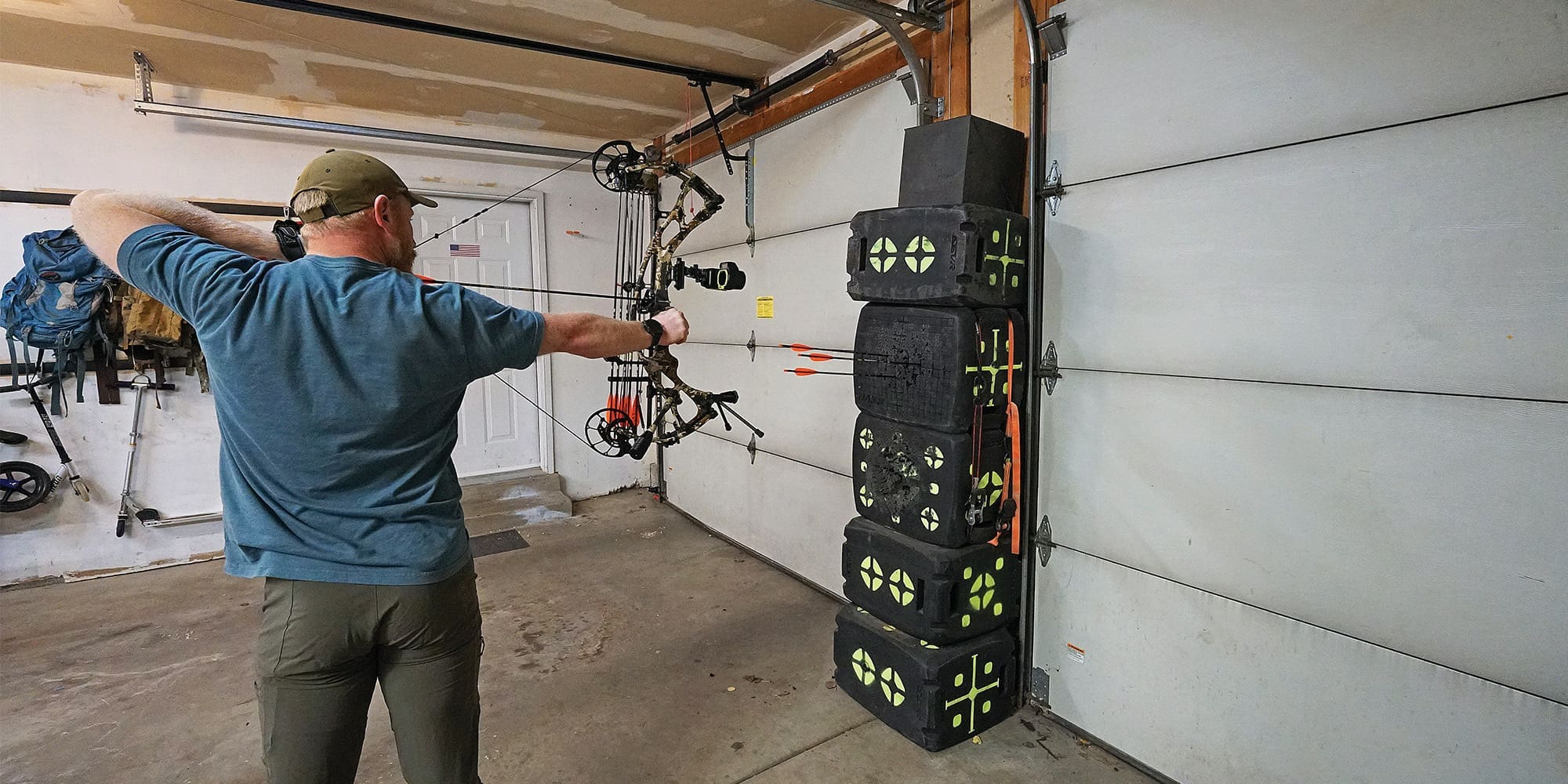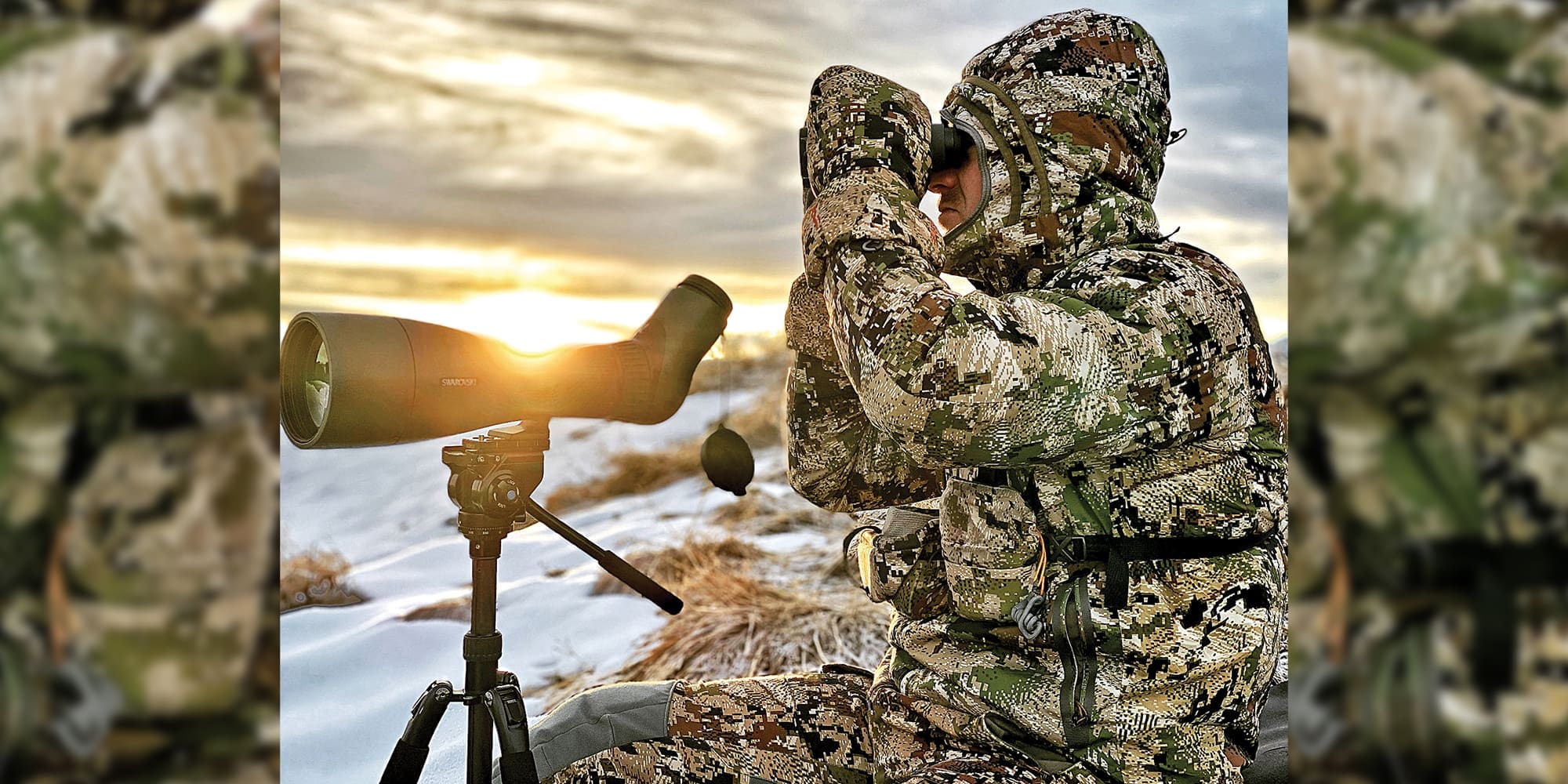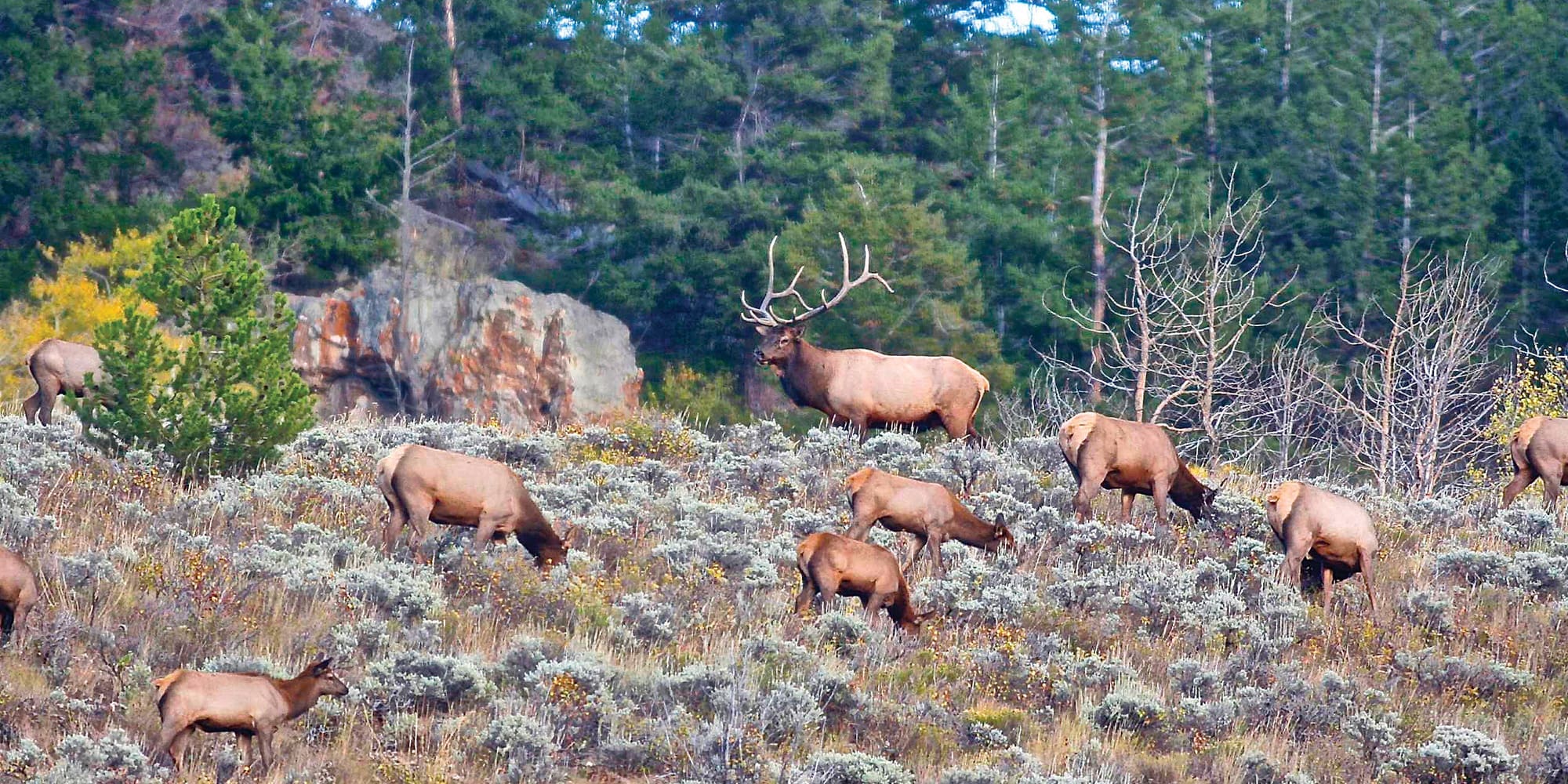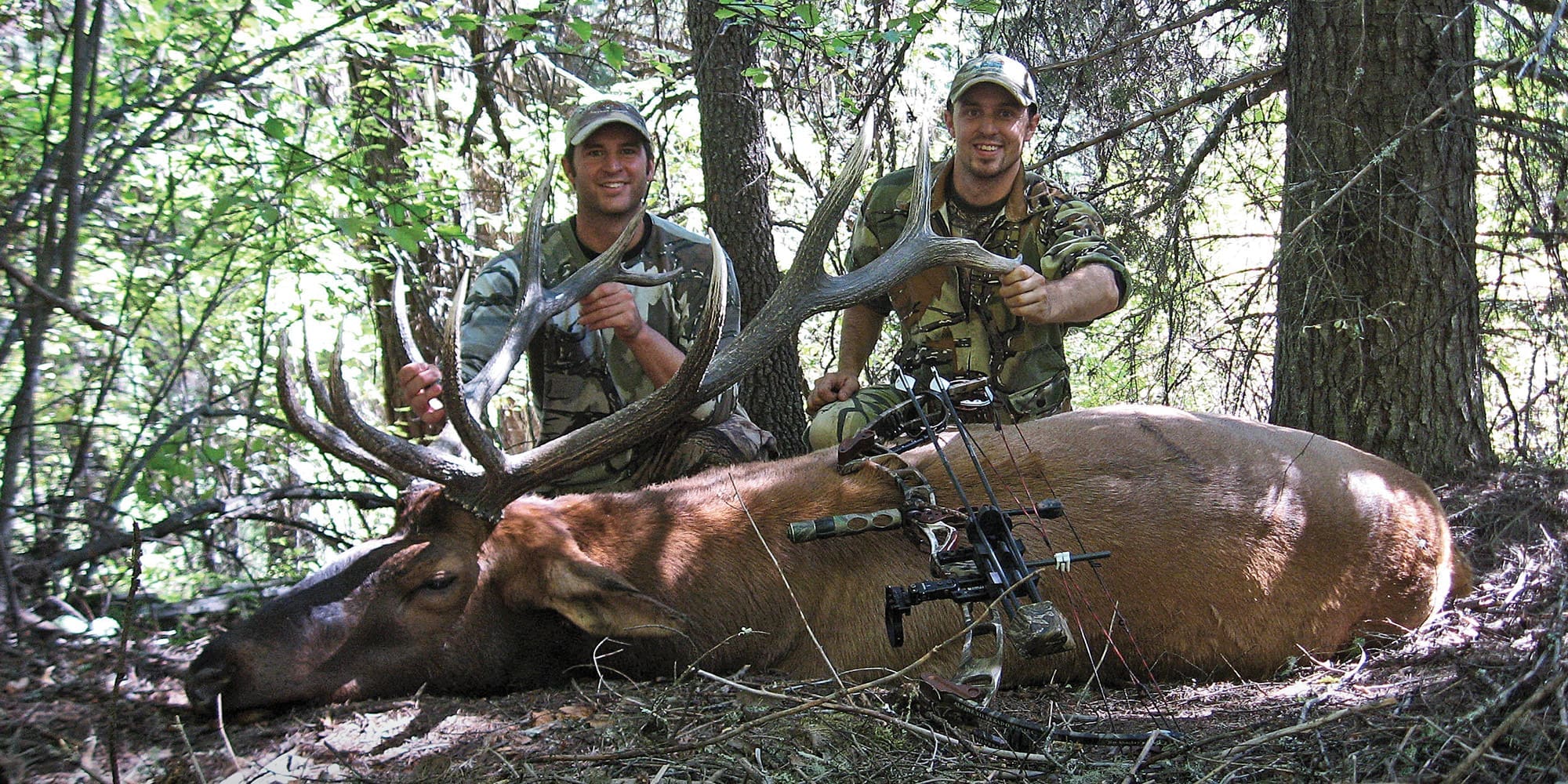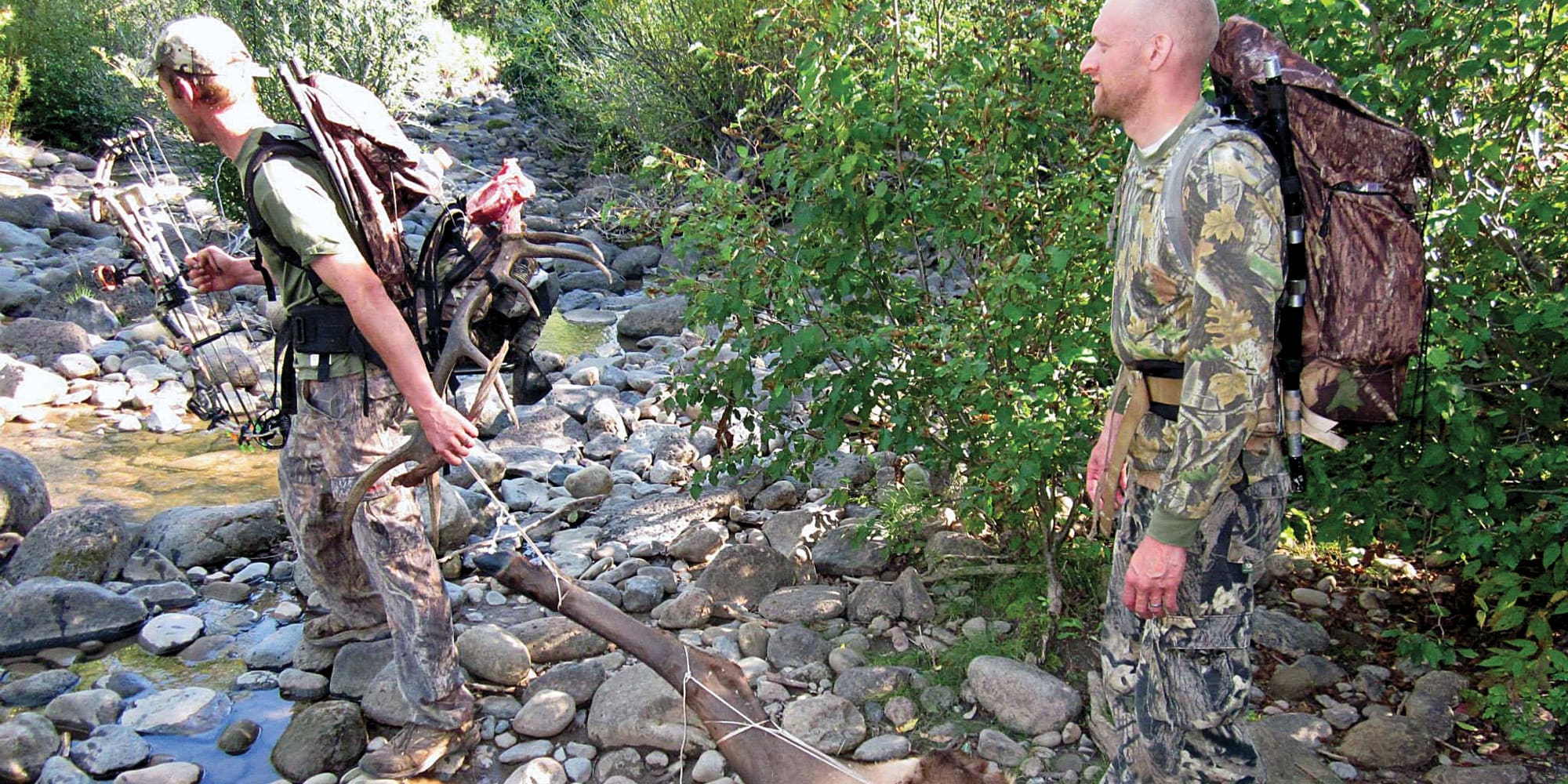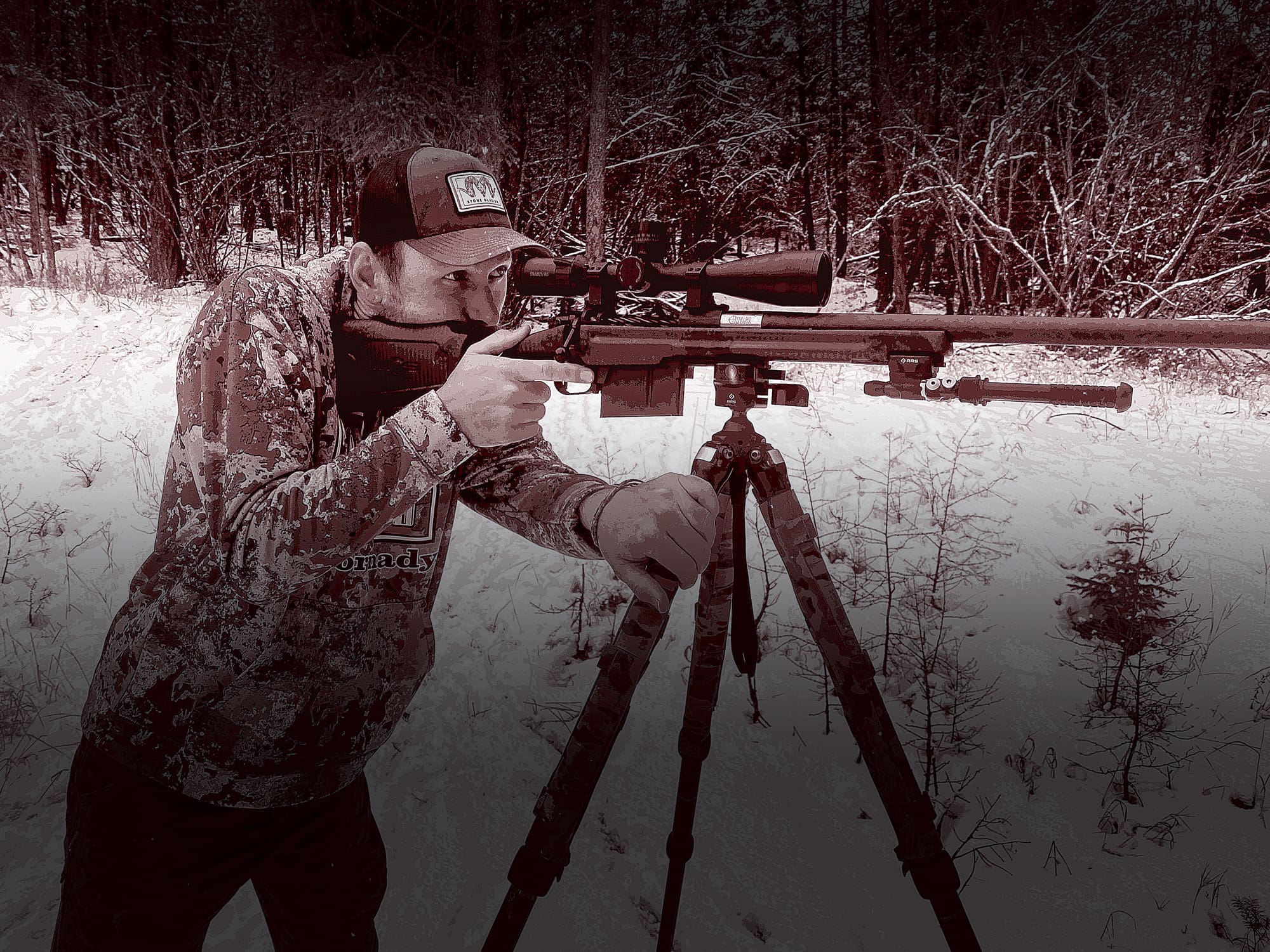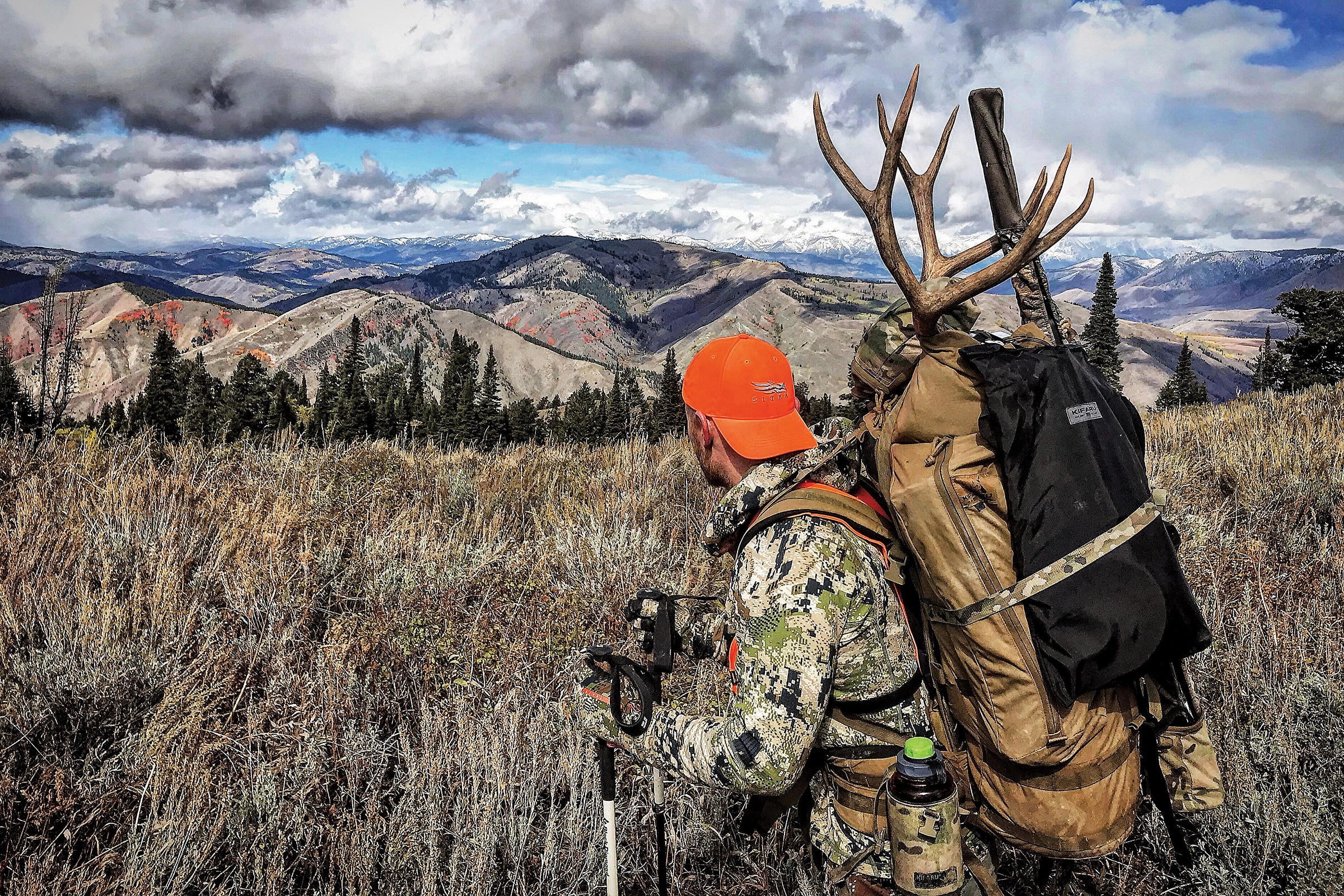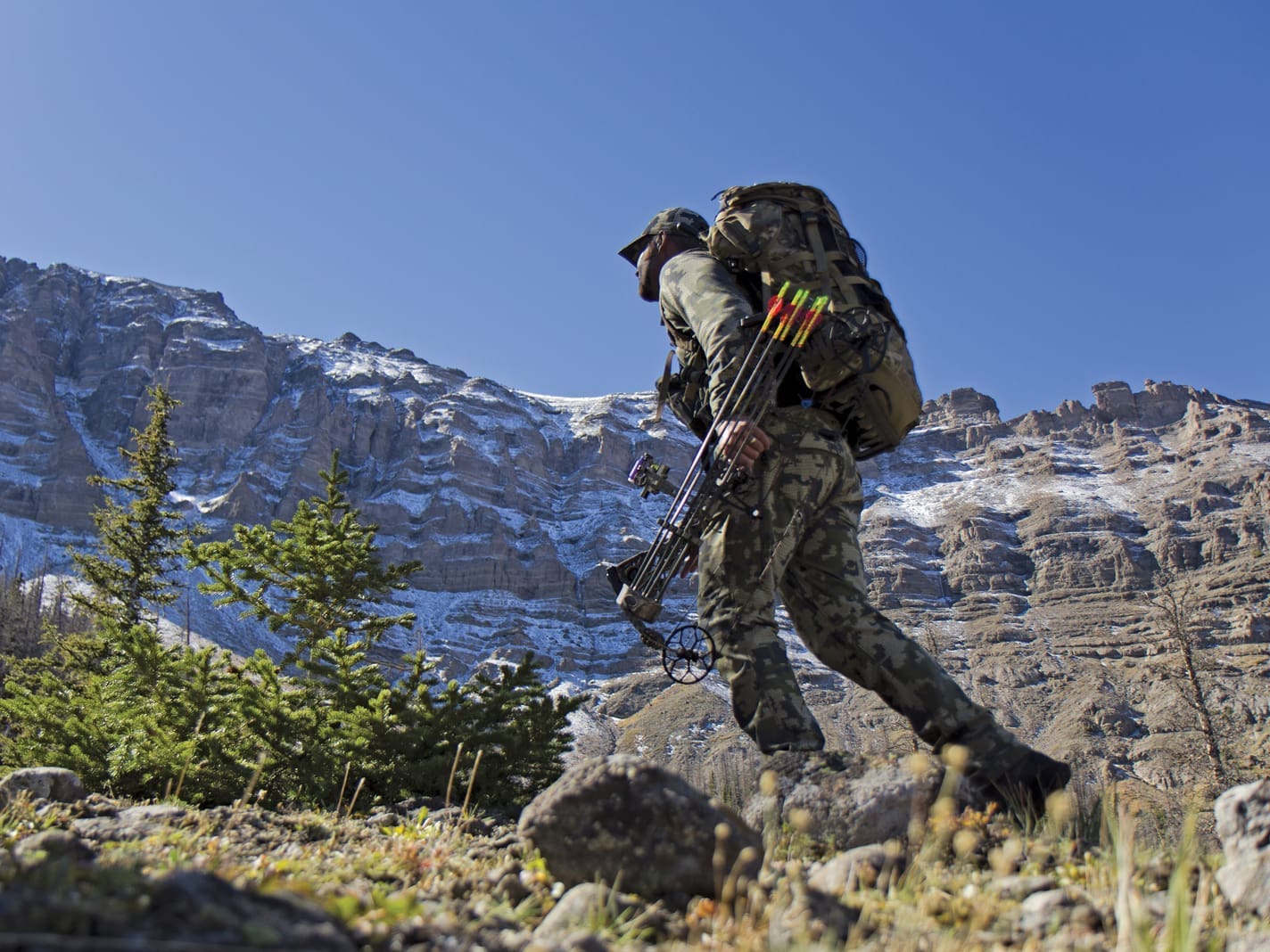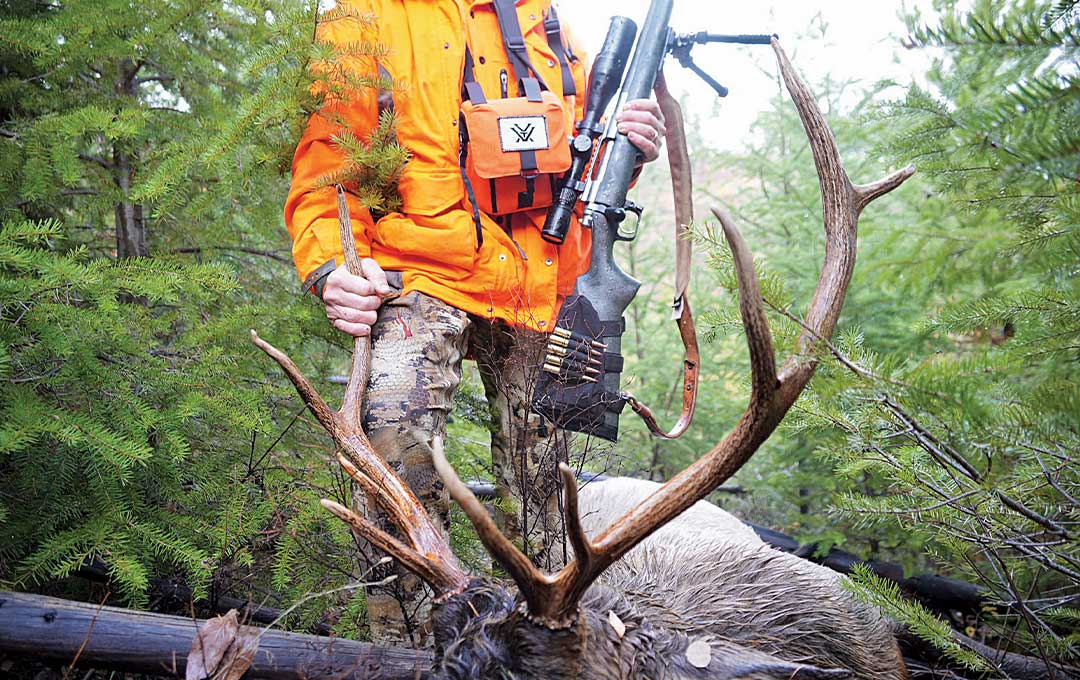
NOTICE: Certain links on this post may earn a commission for Western Hunter Magazine from Amazon or our other affiliate partners when you make a purchase. Thank you for your support.
Early Season Mule Deer Hunting Tactics
Sure, it was hot. The Nevada archery early season mule deer hunting isn’t known for its cold weather. The high desert in August heats up quickly. Deer are everywhere just after daybreak, but they become scarce after bedding in the midday sun.
Maybe I’m a glutton for punishment, but there I sat, baking in the heat and staring behind the glass for hours. With the sun in my face, I picked apart the shadows under the trees. On half of them, if there was anything there, it would be impossible to see.
As I scanned, I noticed a branch that looked off. Upon further inspection, it wasn’t a branch at all, but the back fork of a 200-inch mule deer!
I would say I was surprised, but the truth is some of the biggest mule deer I’ve turned up have been spotted this very same way - spotted by glassing in midday or while exploring a new area in between morning and evening hunts.
A Day in the Life of a Mule Deer Buck
The hot temperatures of August and September really limit deer movement to mornings and evenings. Thus, there is a real science to mule deer hunting midday.
Let’s start by looking at the behavior of a mule deer in the month of August. The mule deer this time of year will still be in velvet. They’re growing their antlers and are often in bachelor groups. Food is on the mind, but temperatures are often the hottest of the year. Their velvet antlers are somewhat sensitive and they need to do a lot of eating to keep up the energy consumption needed to finish growing out their racks. They will bed early and feed late.
By September, most bucks are rubbing off their velvet. The bucks will continue to hang together for a few weeks. They will still be interested in food, but they will spend more time in thicker areas. They may hold to the same general areas, but the bigger bucks will start to break from the group. They will feed and browse longer in cover and often pick favored food sources in these more covered areas.
By early October, the larger bucks will be off on their own or in small groups. Some younger bucks may be near does now, but the mature animals tend to be in isolated pockets. They are preparing their bodies for the rut. In a matter of a few weeks, they’ll expend a tremendous amount of energy rutting. Now, the mule deer are stocking up.
They will be traveling less and eating more. Some mule deer may also use this time to start moving from the summer range to where they will be rutting. These paths are often in cover. This time of year, you see fewer big deer. This behavioral knowledge is important to note because it will help you pinpoint high-percentage areas for midday glassing.

Start Staring Toward the Sun
When you were a kid, they told you don’t look into the sun. Well, those people weren’t mule deer hunting. Now, I’m not suggesting you burn your retinas out, but for midday glassing, you’re going to want to be looking into the shade. This means that your best vantage is going to be looking toward the sun. It actually really sucks, because it makes it harder to see.
I always think of it like this: you can look through the haze, but you can’t look through trees. To be successful picking mule deer out, you need the best vantage you can of the shade. This is important because the whole art of midday glassing is learning the best places to look and the optimal setups for looking into the hard-to-glass places.
Optics Setup
Glassing into the shade during the heat of the day isn’t as simple as looking under a tree. It’s looking under lots of trees where it’s extremely hard to see. Your setup has to be clear and still. A tripod is a must for this application. A spotting scope will work for double-checking what you suspect is a mule deer, but glassing for prolonged periods of time through one eye will wear you down pretty quickly.
The ideal setup is a pair of 12x or 15x binoculars on a tripod. I’ll then have my spotting scope ready to attach for closer inspection. One thing you’ll notice is that heatwaves get worse as the magnification increases. Colors begin to blend together, especially in the shadows, and stationary objects look like they’re moving. For this reason, I also keep a tripod adapter on my lower powered binoculars. I’ll switch between optics while I’m set up.
This might seem like overkill, but once you’ve used this system, you really begin to see what all the fuss is about and why so many hunters that regularly get on big bucks early in the year use a similar setup.
My ideal setup includes the best glass you can afford, a solid pan-head tripod, a quick-attachment to your binoculars, and a large objective lens spotting scope. For a long time, I made this setup work with just my 10x42 binoculars and a spotting scope, using the tripod for the binos and blocking my off-eye to prevent squinting when using the spotter. You can make it work with what you have, but the larger magnification binoculars really help if you can swing it.
Get Dark
Midday glassing can be tough for a number of reasons. The first is that the sun is making it hard to see. The second is you may not be able to simultaneously look into the shade and glass from the shade. This is problematic because your best option is to have the lens shaded as well as have no light filtering into the back of the binoculars where your eyes are looking.
The first step is to figure out a way to block the lens. I do this by finding a tree or other shade source, if possible, to focus on blocking the objective lens from direct light.
If I can’t shade the lens, I’ll opt to use the built-in lens shade on the optics. I often simultaneously hold my hat out above the glass to help block direct light from the lens.
As for ambient light, I’ll use a jacket, shirt, game bag, etc. to drape over myself while glassing. By doing this, you cut out the light hitting your glass from the sides of your eyes. This tactic helps me focus in and concentrate better. It also drastically increases the level of detail and picture quality. It decreases eye strain as well. If you’ve never tried this, you’ll be amazed by the detail you gain in harsh midday light.

Where to Look
Picking the high-percentage bedding area is the key to effectively midday glassing. Tactics will vary slightly between August and early October, but I’ll start with midday basics and then point out a few tips for different times of year to help you hone in.
Shade:
Let’s start by finding the perfect bedding setup. Mule Deer have preferential spots they like to bed. First, find the obvious: shade. Deer in the early season need to get out of the sun. Shade is everywhere there’s a tree or bush, so we need to narrow it down. I refer to this as high-quality shade - places where as the sun moves, the shadow remains on the bucks so they don’t have to re-bed as often. High-quality shade is a factor of two variables: vegetation type and orientation of the slope to direct sunlight.
Vegetation:
Not all shade trees are created equal. Some provide better bedding than others. Shrub-like foliage and trees with open bottoms/brushy tops tend to provide mule deer with the best bedding.
In Nevada and other areas of high desert mule deer hunting, mahogany and juniper provide the best bedding. Junipers offer long deep shadows, while mahogany offers canopy shadows with more visibility. The preferred bedding in any given area can be determined by watching where deer tend to go in the mornings and evening and by observing terrain and deciding what bedding looks the best cover.
Relief:
Slope orientation also plays a key role in mule deer bedding. What provides the best amount of shade, for the longest amount of time, without having to re-bed as often, while the sun moves across the sky? As the sun moves east to west, where will the shade go? Will that shade move the deer to a place that is not safe bedding? Deer bed with safety as the main priority. They seek shade that allows them a view below, a favorable wind, and shade.
With slope orientation, you have to consider that you need to be able to look into the shadow from where you’ll be glassing. This means you’ll often be trying to target pockets of preferred vegetation on north slopes. This does change with each mountain depending on the wind direction and layout.
Mule deer mainly bed with their bodies perpendicular to the slope of the hill. Many times, they use their ears and nose to guard their back. This gives them ample time to smell or hear predators sneaking up from behind while they have a commanding view from below.

Re-Bedding
Midday glassing is only partially looking for bedded deer. It’s also looking for mule deer that are changing beds. Bucks will almost always have to move at some point, stretch out, or readjust as the day moves on. They might be chasing shade or just browsing a bit before bedding again.
During late summer and in the heat, bucks will feed early and bed once near where they were feeding. Then, once the sun hits them, they’ll travel to a more suitable bedding location for the day.
Making note of these re-bedding times can give you a serious edge. With similar conditions, re-bedding can be like clockwork. I will make a note when the deer bed and re-bed. If the pattern becomes apparent, I’ll often switch out my high-power binos for my lower power during the times when they should be moving. This gives me a wider field of view, making it easier to look over large bedding areas at the optimal time to catch moving mule deer. Deviations from this routine most often occur with weather changes.
Month-to-Month Changes in Mule Deer Hunting Tactics
In reference to earlier, when I went over what early-season mule deer do from August to early October, this will help narrow the midday glassing spots even further.
August:
Early in the season, concentrate on small patches in the middle or near feeding areas. For example, mahoganies or junipers near large sage pockets. Also, concentrate efforts in higher altitudes. If it’s hot, the cooler temperatures will attract the bucks. If you’re in an area where you see lots of does, but no bucks, move and look at a higher elevation. The sensitive velvet draws the bucks to higher, more open basins this time of year.
No matter where you are on the mountain, concentrate your glassing effort on the top 1/3 of any elevation gain or land feature. This will be your highest percentage area if everything else is accounted for,
September:
Mule deer tend to be in thicker pockets this time of year but will move around more. As the days get cooler, concentrate your midday glassing in chest-high cover. This will often be a great place for them to bed as well as feed. I’ve watched an over-grown burn come alive midday as bucks pop up to feed and then re-bed in what seems to be “open” country.
Early October:
Concentrate on the thickest areas. Watch the bottom edges or look down into thickly timbered pockets from above. You may catch mule deer moving in them during midday.
This time of year is a good time to still-hunt slowly through large timber stands. Also, watch the timbered north slopes and benches. Midday, they will often feed in cover but don’t be afraid to spend mornings and evenings glassing potential bedding areas.
This time of year, I also look for glassable covered areas, such as large timber burns, clear-cuts, and thick mahogany patches. Focusing on these higher percentage areas will help you turn up the bucks that refuse to show themselves.
Find Them First
The hardest part of mule deer hunting is finding them. The odds play in your favor if you know where to look midday. After the bucks disappear in the morning, the hunt is just beginning. With an immense amount of patience and looking in the right places, those midday lulls may quickly turn around into midday stalks, and if played right, the beginning of a successful mule deer hunting story.


